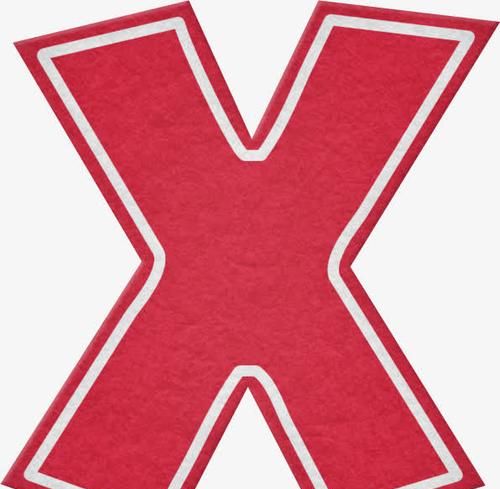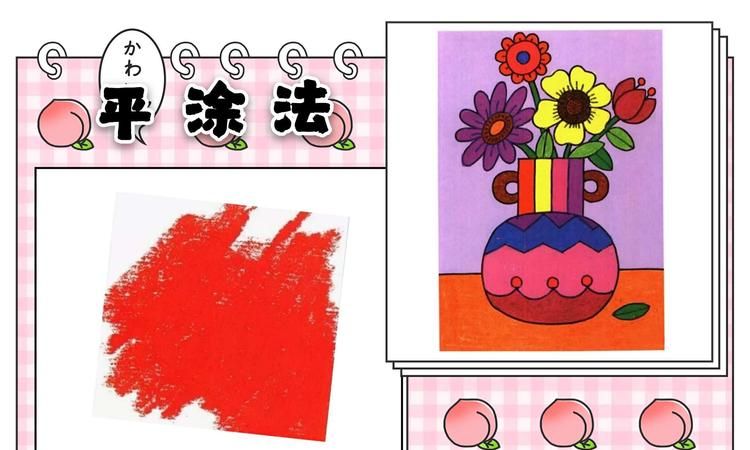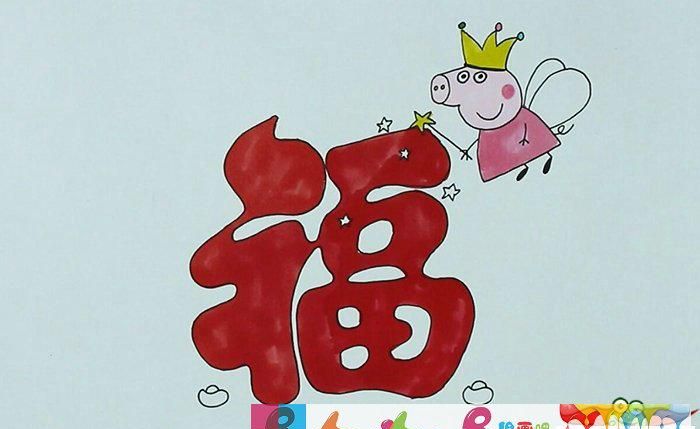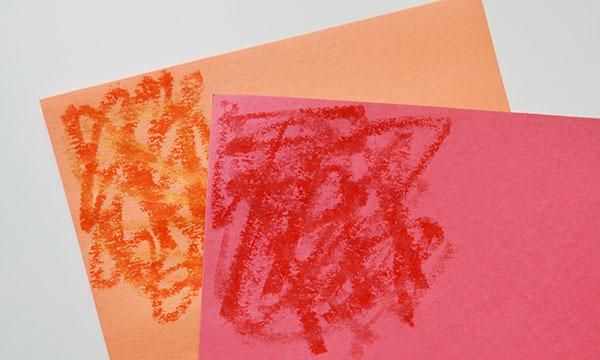本文目录
把这个苹果涂成红色用英语怎么写的
Color the apple is red

把涂成红色英语
colour sth red或者paint sth red
不要加别的介词啦

"请将它涂成红色" 翻译成英语
please paint it into red.

冀教版四年级下册英语知识点总结
期末四年级英语知识点总结
Unit1
pen钢笔 ruler 尺 pencil case 笔袋 ball pen 圆珠笔 pencil铅笔 bookmark 书签
rubber橡皮 book 书 notebook 笔记本 I我 you你 may 可以 have 有 for 给,为
please请 here这里 card卡片,贺卡 this这、这个 that那、那个 thank 谢谢
goodbye再见 yes是的 sure 当然 all right好、行、不错 come in 进来
语音
b--- /b/ big boy bird bed banana
c--- /k/ cap cat car clock coat
词组
1. come in 进来 2.have a copybook 得到(拿)一本抄写本
3. this ball pen 这支圆珠笔 4.that ruler 那把尺子
5. two rubbers 两块橡皮 6. in your pencil case 在你的笔袋里
7. my pencil 我的铅笔 8.a little book 一本小书
9. have a look 看一看 10.a nice bookmark 一张漂亮的书签
11. Good morning! 早上好! 12.Here you are. 给你。
13. All right. 好的。 14.Happy Teachers’ Day! 教师节快乐!
15. the big cap 这顶大帽子 16. for the boy 给这个男孩
句型
1. May I come in ? Yes. Come in, please. 我可以进来吗?可以,请进。
2. May I have (a pen)? Sure. / Yes. Here you are.
我可以要(一支钢笔)吗?当然,给你。
3. May I have( anotebook) for (Helen)? Yes./ Sure. Here you are.
我可以为(海伦)要(一本笔记本)吗? 好,给你。
4. This (school bag) is for you. Thank you! 这只(书包)是给你的。谢谢!
5. That( pencil sharpener) is for (Liu Tao). Allright. 那把(削笔器)是给(刘涛)的。好的。
6. Here’s a card for you. Thanks! 这儿有一张卡片给你。多谢!
7. The cat and the big cap are for the boy. 这只猫和这个大帽子是给这男生的。
8. What’s inyour pencil case? I’ve got(I have got) two pens.
在你的笔袋里是什么? 我有两只钢笔。
9. What a nice little book! 多么漂亮的一本小书!
重点:have 1. 得到或拥有 I have a new book. May I have a copybook?
2. 吃(涵盖了吃、喝) have supper have breakfast have some milk
Unit2
dog 狗 cat 猫 tiger 老虎 lion 狮子 panda 熊猫 monkey 猴子 bear 熊
rabbit兔子 yes 是的 no 不 is 是 isn’t= is not 不是 my 我的 your 你的
his 他的 her 她的 on 在… 上 think 想,认为 lovely 可爱的 like 喜欢 too 也
toy 玩具 shop 商店 nice 美丽的 guess 猜 hello 喂 can 能 have alook 看一看
语音
d ---/d/ desk dog bed door panda
f --- /f/ fat five father knife football
词组
1. a nice monkey 一只漂亮的猴子 2.have a look 看一看
3. my dog 我的狗 4. your cat 你的猫
5. his tiger 他的老虎 6.her lion 她的狮子
7. this monkey 这只猴子 8.that bear 那只熊
9. a toy rabbit 一只玩具兔 10.on the desk 在书桌上
11. a new photo 一张新照片 12. five fat dogs 五只肥狗
13. in a toy shop 在一家玩具店 14.in which box 在哪只盒子里
15.How lovely! 多么可爱啊! 16.I’d like…= I would like我想要……
17. like my panda 喜欢我的熊猫 18. I think 我想、我认为
句型
1. What’s this / that? It’s a tiger. 这/那是什么?它是一只老虎。
2. What’s that on the desk? It’s a lion. 桌子上的那个是什么?那是一只狮子。
3. This is / That’s my / your / his / her purse.
这(那)是我的(你的、他的、她的)钱包。
4. This is your dog, I think. Yes, it is. 我想这是你的狗。是的。
5. That’s his panda, I think. No, it isn’t. It’s herpanda.
我想那是他的熊猫。不,那是她的熊猫。
6. Can I have alook? Sure. 我可以看一看吗?当然。
7. Can you see the toys? Yes, I can. / No, I can’t.
你能看见这些玩具吗?是的,我能。/ 不,我不能。
8. I’d like(=I would like ) this panda. Here you are. 我想要这只熊猫。给你。
9. I like my panda. 我喜欢我的熊猫。
10. How lovely/ nice! 真可爱/漂亮!
11. I see. 我明白了。
12. In which box? Guess. 在哪个盒子里?猜。
13. Your five fat dogs are on the desk. 你的五只胖胖的狗在课桌上。
Unit3
key 钥匙 fan 扇子 purse 钱包 water bottle 水壶 crayon 蜡笔 umbrella 伞 tape 修正带
storybook 故事书 perhaps 也许 classroom 教室 but 但是sorry 对不起的、抱歉的
where在哪里 where’s=where is over there 那里 come here 过来
excuse me 请原谅 TVroom 电视房 computer room 电脑房
语音
g ---/ɡ/ get go girl good big
h ---/h/ hot he her his here
词组
1. my purse 我的钱包 2.over there 在那边
3. Helen’s key 海伦的钥匙 4. come here 过来
5. in the classroom 在教室里 6.on the box 在盒子上
7. get up 起床 8.eat a hot dog 吃一个热狗
9. in the TV room 在电视房里 10. in the computer room 在电脑房里
11. an umbrella 一把伞 12.a big fan 一把大扇子
13. his tape 他的修正带 14.Not at all. 别客气。
15. Let me see. 让我看看。 16.I don’t know. 我不知道。
17. in the classroom 在教室里 18. buy you a purse = buy a purse for you 给你买个钱包
句型
1. Is this / that my / your / his / her purse?
这(那)是我的(你的、他的、她的)钱包吗?
Yes, it is. / No, it isn’t. 是的。/不是的。
2. Where’s my / your / his / her fan? 我的(你的、他的、她的)扇子在哪里?
Perhaps it’s in / on the desk. 也许它在书桌里面(上面)。
3. Where’s my storybook? Is this your storybook? 我的故事书在哪里?这是你的故事书吗?
No, it isn’t. It’s Mike’s. Perhaps your storybook ison the chair.
不,是麦克的。也许你的故事书在椅子上。
4. Where’s my crayon? It’s over there. 我的蜡笔在哪里?在那边。
5. Where’s Yang Ling? She’s in the park. 杨林在哪里?她在公园里。
Where’s Mike? Perhaps he’s in the TVroom.
麦克在哪里? 也许他在电视室。
6. Where are you? I’m in the bedroom. 你在哪里?我在卧室里。
7. Where are you? I’m here. 你在哪里?我在这里。
8. Let me see. 让我看看。
9. I’m sorry. 抱歉。 Sorry, I don’tknow.抱歉,我不知道。
10. Thegirls get up and eat a hot dog and a hamburger.
女孩们起床后吃了一个热狗和一个汉堡。
重点:Excuse me. 和 I’msorry.的区别
两者都是“对不起,请原谅”的意思,但是前者用于说话做事可能会引起对方不快或要麻烦别人或请示许可等场合。后者用于已经犯过错误,心有歉意的情况。
Unit4
car 小汽车 bus 公共汽车 bike 自行车 doll 玩具娃娃 puzzle 拼图 balloon 气球kite 风筝
puppet木偶玩具do做、干 don’t=donot in English 用英语(表达)colour 给….着色、颜色 clean 把…弄干净、擦干净 love喜爱、热爱 look at 看,朝…看 very much 很,非常
语音
j ---/ / Jim juice jacket jeans jeep
k ---/k/ key kitchen kite book cake
词组
1. in English 用英语 2. an English car 一辆英国小汽车
3. like puppets 喜欢木偶 4. like the kite 喜欢这个风筝
5. look at my kite 看我的风筝 6. colour it red 把它涂成红色
7. look at the yellow bike 看这辆黄色的自行车。 8. Let’scolour it 让我们给它着色。
9. in the kitchen 在厨房里 10. clean the car 洗车
11. fly kites 放风筝 12. Thank you very much. 非常感谢。
13. Jim’s juice and key 吉姆的果汁和钥匙 14. fly very high 飞得很高
15. up to the sky 直到天上 16.Me, too. 我也是。
17. That’s OK.不要紧。 18. love dolls 喜爱洋娃娃
句型
1. What’s this/ that in English? It’s a puzzle. 这/那个用英语怎么说?是一张拼图。
2. Do you like kites? Yes, I do. 你喜欢风筝吗?是的,我喜欢。
3. Do you like bikes? No, I don’t. I love cars.
你喜欢自行车吗?不,我不喜欢。我喜欢小汽车。
4. I like/love thiscar. Me, too. 我喜欢/喜爱这辆小汽车。我也是。
5. Let’s clean the classroom. All right. 让我们打扫教室吧。好的。
Let’s colourit. OK. 让我们涂上颜色。好的。
6. Here’s a doll for you. 这里有个玩具娃娃给你。
This doll is for you. 这个洋娃娃是给你的。
Thank you verymuch. 非常感谢你。
7. ----I’m sorry.---- That’s OK. ----我很抱歉。----不要紧。
8. Jim’s juice and key are in the kitchen. 吉姆的果汁和钥匙在厨房里。
9. You’reout. 你出局了。
重点:Like 用法:(love的意思是喜爱,比like的程度更高些,但用法一样。)
1. like+可数名词复数 表示喜欢某类事物
I like puzzles. I like kites.
2. likethe/this/that/my/his…+可数名词单数 表示喜欢某件事物
I like ths kite. I like that panda. I like your toy bear.
3. likedoing 表示喜欢某项运动或喜欢做某件事
like swimming like skating like jogging
4. like +不可数名词
like milk like jiuice like bread like blue
5. like +人称代词宾格: me you him her it us you them
(对应主格为: I you he she it we you they.
对应物主代词为: my you his her its our you their)
Thisis a nice monkey. I like it.
Unit6
sweater毛衣 scarf 围巾 jacket 夹克衫 pair 双;对 big 大的 small小的 long 长的
short 短的 whose 谁的 they它们 are 是(复数) a pair of jeans一条牛仔裤
a pair of gloves 一副手套 too 太 a pair of socks一双袜子 a pair of shoes 一双鞋
a pair of shorts 一条短裤 they’re = they are 它们是 so 如此 funny 有趣的 dear天哪
语音
l ---/ l / like look long lunch classroom
m ---/m/ mango milk mother small morning
词组
1. whose scarf 谁的围巾 2. look at my dress 看我的长裙
3. too small 太小 4. try this one on 试穿这个
5. try this pair on 试穿这双、条 6.look so funny 看上去如此有趣
7. so big 那么大 8.my father’s 我父亲的
9. a pair of jeans 一条牛仔裤 10. a pair of shorts 一条短裤
11. two pairs of socks 两双袜子 12. her mother’s dress 她母亲的连衣裙
13.some milk and mangoes 一些牛奶和芒果 14. some milkfor lunch 一些牛奶做午餐
15. Don’t worry. 别担心。 16. all the boys 所有的男孩
17. a funny goat 一只有趣的山羊 18. in a coat 穿一件外套

以上就是关于把它涂成红色的英语怎么写 ,把这个苹果涂成红色用英语怎么写的的全部内容,以及把它涂成红色的英语怎么写 的相关内容,希望能够帮到您。

